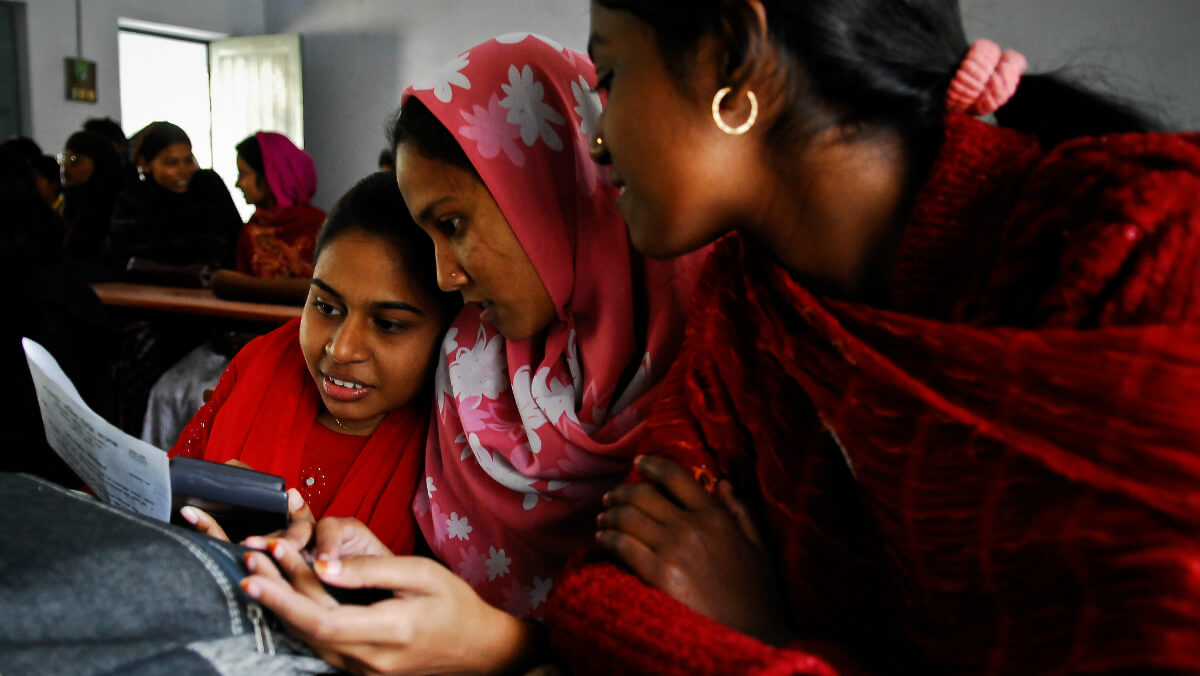Research has consistently shown that the gender digital divide is not only pervasive, but growing in size. Tackling this issue and working to ensure that women and men have the same opportunities for online access, use, and empowerment is at the heart of the Web Foundation’s work to achieve digital equality. Fortunately, the wider international community is now also paying heed to this critical issue, as evidenced by the ITU’s recent open consultation on Bridging the Digital Gender Divide.
Last month, our Women’s Rights Online team had the opportunity to share our views on the topic during a physical consultation dedicated to the issue. Ingrid Brudvig, the Web Foundation’s Digital Inclusion Research and Advocacy Coordinator, highlighted key points from our written submission during this meeting with expert panelists and a variety of stakeholders from government and civil society.
1. Build better broadband policies.
Better broadband policies offer a clear path to improving women’s internet access and use, and to moving toward universal access goals. ICTs are a tool not just for economic empowerment, but also for civic, political and social empowerment; women’s exclusion from the digital revolution undermines development across all these areas on a global scale. Unfortunately, our recent study of 58 low- and middle-income countries shows that just a handful of governments have taken any action at the policy level to advance true progress toward closing the gender digital divide.
2. Make ICT policies & programmes gender-responsive.
ICT policies must be gender-responsive and must work to address women’s access issues, as well as issues around digital skills, online safety, and online empowerment. At the same time, these policies and programmes must recognise that women are not a homogeneous group (i.e., digital inequalities may adversely affect certain women more than others), and must implement a human rights-based approach to policy-making. Failure to focus on tackling barriers faced by women will result in policies that continue to exclude half the population.
3. Include women in the policy-making process (and train policymakers on developing gender-responsive policies).
To create effective gender-responsive policies, women must be included in policy-making processes. Capacity building for policymakers on technical standards must adopt a gendered perspective, and the ITU and its member states must continue to uphold multi-stakeholder approaches and inclusive gender equitable decision making.
4. REACT: develop policy focused on Rights, Education, Access, Content & Targets.
Creating a more accessible and empowering internet for women requires policy that focuses on a number of key areas, easily remembered as R.E.A.C.T: (1) Rights — strengthen laws to protect online rights and privacy for women and women; Education — integrate basic digital literacy in school curricula and support continued training opportunities for women and girls to build skills needed to safely participate online; Affordable access — reduce the cost to connect to and use the internet by working towards the Alliance for Affordable Internet’s “1 for 2” affordability target and by expanding public access opportunities; Content — encourage and incentivise the creation and availability of content that is relevant to women, and is available in local languages; and Targets — incorporate concrete gender equity targets with adequate funding into national policies, and regularly monitor progress towards these goals.
5. Take action — now.
As the digital gender gap grows, so too does the urgency with which we need to put these policies into action. Many of the barriers to connectivity and women’s rights online are the result of policy failure. Governments, private sector and civil society alike must work together and take action to maximise the benefits of the internet and emerging digital technologies for all people.
For updates on our other work, follow us on Twitter at @webfoundation and sign up to receive our email newsletters.
